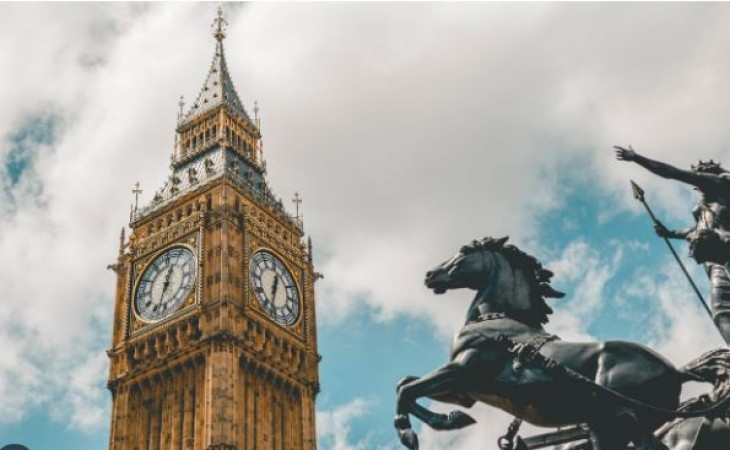
London is a city rich in history, and there are numerous historical places to visit. Here are some of the top historical attractions in London:
Tower of London: A historic fortress and former royal palace, the Tower of London is a UNESCO World Heritage Site. It has served as a royal residence, a prison, an armory, and a treasury throughout its nearly 1,000-year history. The Tower of London was founded in 1066 by William the Conqueror after his victory in the Battle of Hastings. It started as a timber and earth fortification but was later expanded and transformed into the stone structure we see today.
Over the centuries, it served as a royal residence, a prison, an armory, a treasury, and a menagerie. The central core of the Tower of London is the White Tower, a massive stone keep that was built by William the Conqueror. It is the oldest part of the complex and now houses the Royal Armouries collection, displaying arms and armor from different periods.
ALSO READ : The Majestic Angkor Wat: Exploring the Enigmatic Temple Complex in Cambodia
Buckingham Palace: The iconic residence of the British monarchy since the reign of Queen Victoria. The Changing of the Guard ceremony takes place here and is a popular attraction for visitors. Originally known as Buckingham House, it was built in 1703 as a private residence for the Duke of Buckingham. In 1761, King George III purchased the house as a private residence for his wife, Queen Charlotte. It became the official royal residence in 1837, during the reign of Queen Victoria. Buckingham Palace is the primary residence of the British monarch in London. It is used for official events, state functions, and ceremonies. The Queen and members of the royal family often host official guests and dignitaries at the palace.
During the summer months, when the Queen is not in residence, the State Rooms of Buckingham Palace are open to the public for tours. These opulent rooms, including the Throne Room, Ballroom, and Picture Gallery, showcase exquisite art, furniture, and decorations from the Royal Collection.
ALSO READ : These are the 6 airports with the longest runways in the world, Delhi is also included in this list
Westminster Abbey: A stunning Gothic church that has witnessed countless royal weddings, coronations, and burials. Many prominent historical figures are buried within its walls. Westminster Abbey has a long and storied history, dating back over a thousand years. It was originally founded in the 7th century and has undergone several rebuilds and expansions over the centuries. The current Gothic-style structure dates mainly from the 13th to the 16th centuries. Westminster Abbey is known for its association with the British monarchy.
It has been the site of numerous coronations, including that of William the Conqueror in 1066, and it remains the traditional location for the coronation of British monarchs. The abbey has also hosted many royal weddings, most notably the wedding of Prince William and Catherine Middleton in 2011.
The Houses of Parliament and Big Ben: An iconic symbol of London, the Houses of Parliament (Palace of Westminster) houses the British Parliament, while Big Ben (renamed the Elizabeth Tower) is the famous clock tower located nearby. The Houses of Parliament is where the UK Parliament convenes. It houses two chambers: the House of Commons and the House of Lords. The House of Commons is the lower house and consists of Members of Parliament (MPs) who are elected by the public. The House of Lords is the upper house and includes appointed members, such as life peers, bishops, and hereditary peers.
While the Houses of Parliament is a working government building and not generally open to the public for free exploration, visitors can attend debates and committee sessions by obtaining tickets in advance. Tours are available for UK residents, and overseas visitors can attend during the summer recess. The Big Ben clock tower is not open to the general public, but visitors can view the exterior and hear the chimes from outside the Houses of Parliament.
St. Paul's Cathedral : Is a magnificent and historic Anglican cathedral located in the City of London, England. It is one of the most recognizable and iconic landmarks in the city and holds significant religious, architectural, and cultural importance. The current St. Paul's Cathedral is the fifth church to be built on this site. The first cathedral was constructed in AD 604 by the Anglo-Saxon King Ethelbert. The present cathedral, designed by Sir Christopher Wren, was completed in 1711 after the previous cathedral was destroyed in the Great Fire of London in 1666. St. Paul's Cathedral is a masterpiece of English Baroque architecture. Sir Christopher Wren's design is characterized by its impressive dome, elegant portico, and stunning interior.
The dome, which rises to a height of 365 feet (111 meters), is one of the largest in the world and provides breathtaking views of London from its Golden Gallery. St. Paul's Cathedral stands as a testament to the resilience of London's spirit after the Great Fire and remains a symbol of faith, history, and artistic achievement. Its grand architecture and spiritual significance make it a must-visit destination for those exploring the historical and cultural treasures of London.
Discover the Enchanting Beauty of Oman: Top Places to Visit
Unveiling the Mysteries of White Holes: The Enigmatic Counterparts to Black Holes
These are the 6 airports with the longest runways in the world, Delhi is also included in this list